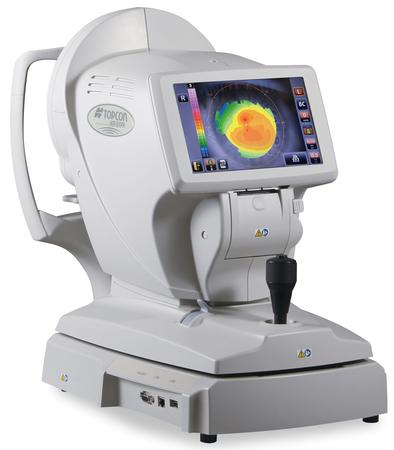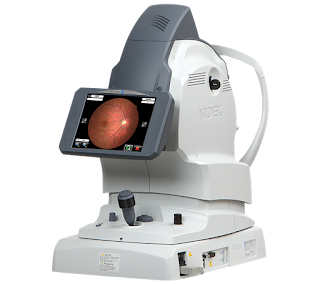Significant Benefits of Purchasing Used Ophthalmic Equipment
In the ever-evolving landscape of healthcare, ophthalmology remains a critical field dedicated to the preservation and improvement of vision. As technology advances and practices evolve, acquiring the latest equipment becomes essential for providing optimal patient care. However, the cost of new ophthalmic equipment can often be prohibitive for smaller practices or those looking to manage expenses effectively. Fortunately, there is a viable alternative: purchasing used ophthalmic equipment.
The Case for Used Equipment
Used Ophthalmic Equipment offers numerous advantages for
practitioners, clinics, and hospitals alike. Here are some key reasons why
buying used can be a savvy decision:
Cost-Effectiveness:
One of the most obvious benefits of purchasing used
medical equipment is the significant cost savings. Used equipment is typically
available at a fraction of the price of new items, allowing practices to
acquire essential tools without breaking the bank. This cost-effectiveness enables
smaller practices or those on tight budgets to access high-quality equipment
that may have otherwise been financially out of reach.
Accessible Technology:
While the latest advancements in ophthalmic
technology are undoubtedly impressive, many older models still offer
exceptional functionality and reliability. Purchasing used equipment allows
practitioners to access technology that may have been superseded by newer
models but remains perfectly suitable for their needs. By taking advantage of
accessible technology, practices can still deliver high-quality care without
the need for cutting-edge, and often more expensive, equipment.
Diverse Selection:
The used medical equipment market offers a diverse
selection of products to suit various needs and preferences. Whether you're in
the market for diagnostic instruments, surgical tools, or imaging equipment,
you're likely to find a range of options available from reputable sellers. This
variety enables practitioners to compare different makes and models to find the
best fit for their practice requirements and budget constraints.
Quick Availability:
Unlike purchasing new equipment, which may involve
extended lead times for manufacturing and delivery, used equipment is often
readily available for immediate purchase. This quick availability allows
practices to acquire the equipment they need promptly, minimizing downtime and
ensuring continuity of care for patients.
Where to Find Used Ophthalmic Equipment
There are several avenues through which
practitioners can acquire used ophthalmic equipment:
Medical Equipment Dealers:
Specialized dealers often carry a wide selection of
both new and Used Ophthalmic
Equipment. These dealers typically inspect and refurbish equipment to
ensure it meets quality standards before offering it for sale.
Online Marketplaces:
Websites such as eBay, Amazon, and dedicated
medical equipment marketplaces feature listings for used ophthalmic equipment.
Buyers should exercise caution and thoroughly research sellers and product descriptions
to ensure the equipment's quality and condition.
Medical Equipment Auctions:
Auctions specializing in medical equipment may
offer opportunities to purchase various used medical equipment at competitive
prices. Interested buyers can participate in online or in-person auctions to
secure desired items.
Hospital Surplus Sales:
Hospitals occasionally sell surplus equipment,
including ophthalmic devices, when upgrading or replacing their inventory.
Practitioners can inquire with local hospitals or medical facilities about
upcoming surplus sales or equipment availability.
Networking:
Networking within the ophthalmology community can
yield valuable leads on used equipment opportunities. Colleagues, industry
professionals, or online forums may have insights or equipment available for
sale or trade.
Considerations When Purchasing Used Equipment
While purchasing used medical equipment offers
numerous benefits, buyers should exercise diligence to ensure a satisfactory
transaction:
Inspection:
Thoroughly inspect equipment for signs of wear,
damage, or malfunction before finalizing a purchase. If possible, test the
equipment to verify its functionality and performance.
Seller Reputation:
When buying from dealers, online marketplaces, or
individual sellers, research their reputation and reliability. Look for
reviews, ratings, or references from previous customers to gauge the seller's
trustworthiness.
Warranties and Returns:
Inquire about any warranties or return policies
offered with the used equipment. Having assurances in place can provide peace
of mind and recourse in the event of unexpected issues or discrepancies.
Compatibility and Support:
Ensure that the used equipment is compatible with
existing systems or infrastructure within your practice. Additionally, consider
the availability of technical support, training, and servicing for the
equipment to maintain optimal performance over time.
Purchasing Used Ophthalmic Equipment
presents a practical and cost-effective solution for practitioners seeking to
enhance their capabilities while managing expenses responsibly. By exploring
the diverse options available in the used equipment market and conducting due
diligence in the purchasing process, practices can acquire reliable tools to
deliver exceptional patient care without compromising on quality or financial
stability.




Comments
Post a Comment